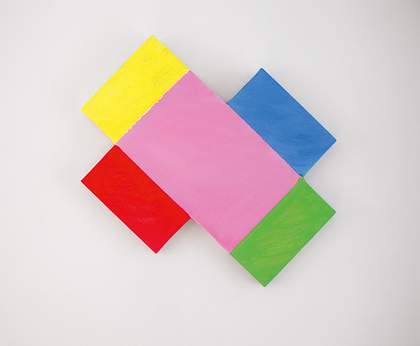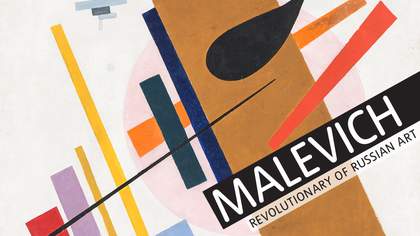
Mary Heilmann
Malevich Spin 2011
Oil on canvas, 508 x 660mm
© Mary Heilmann, courtesy the artist and Hauser & Wirth
I love Malevich: Suprematism, his move away from Cubist logic and narrative and his being inspired by aerial photography.
In 1915 he emotionally dismissed narrative in his essay From Cubism and Futurism to Suprematism: The New Realism in Painting. This feels poignant because I came into painting through the back door of sculpture, and to sculpture from the craft of pottery – throwing pots on the wheel, totally physical, like a sport. Making objects has always been behind the logic of my work in painting, so Malevich’s timeless logic of ‘no picturing’ speaks to me.
His interest in aerial photography makes me think of Robert Smithson, whose earthworks, such as Spiral Jetty 1970 and Amarillo Ramp 1974, were inspired by flying over the sites. Malevich’s pieces, with forms that fly over the picture plane without gravity or an horizon, are often shown at different heights on the wall, making the wall, and the room, part of the moment. For example, Suprematist Composition: White on White 1918 or Black Square 1915 are displayed in the room, even across a corner, to be seen as events. Not pictures. No narrative. No time.

